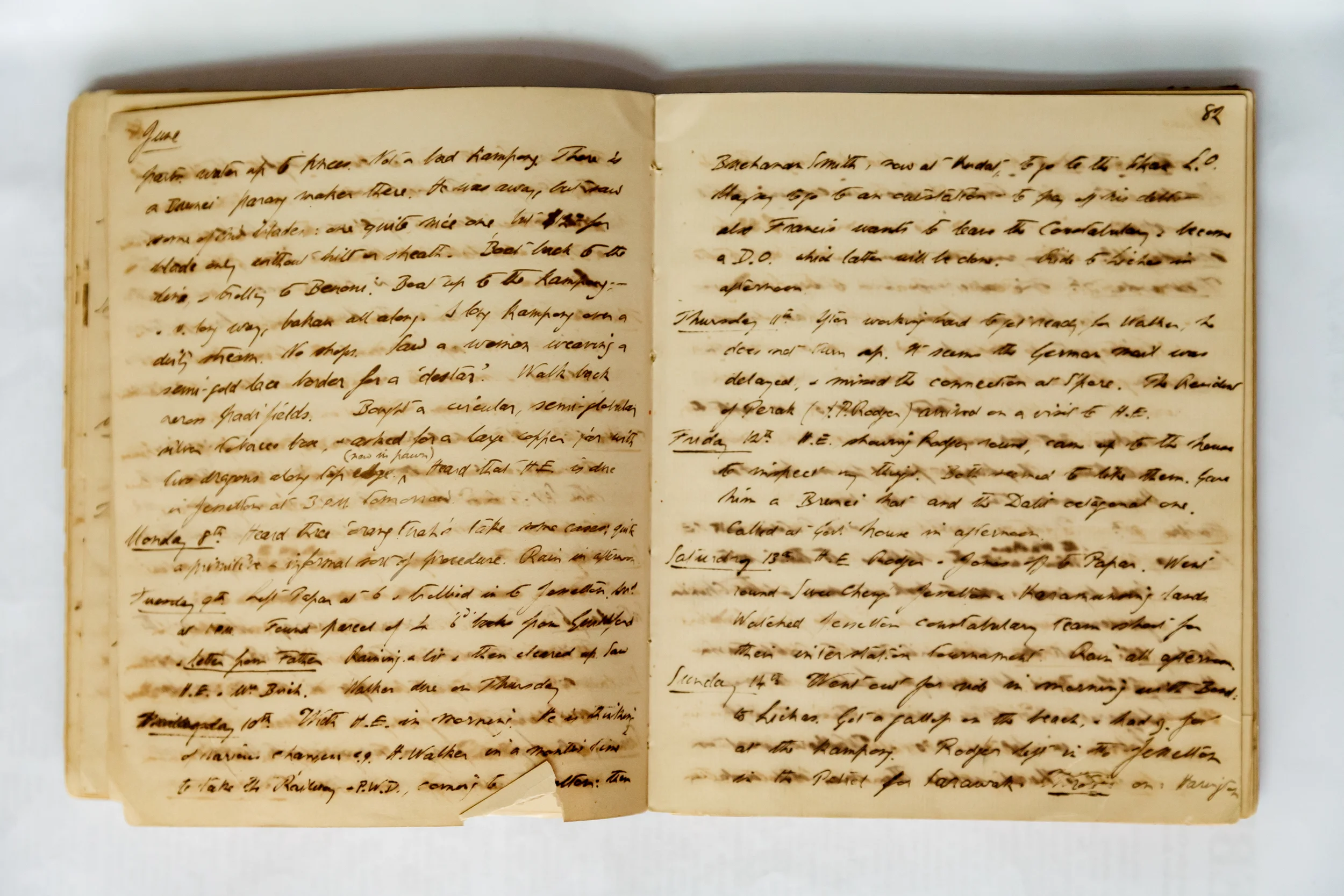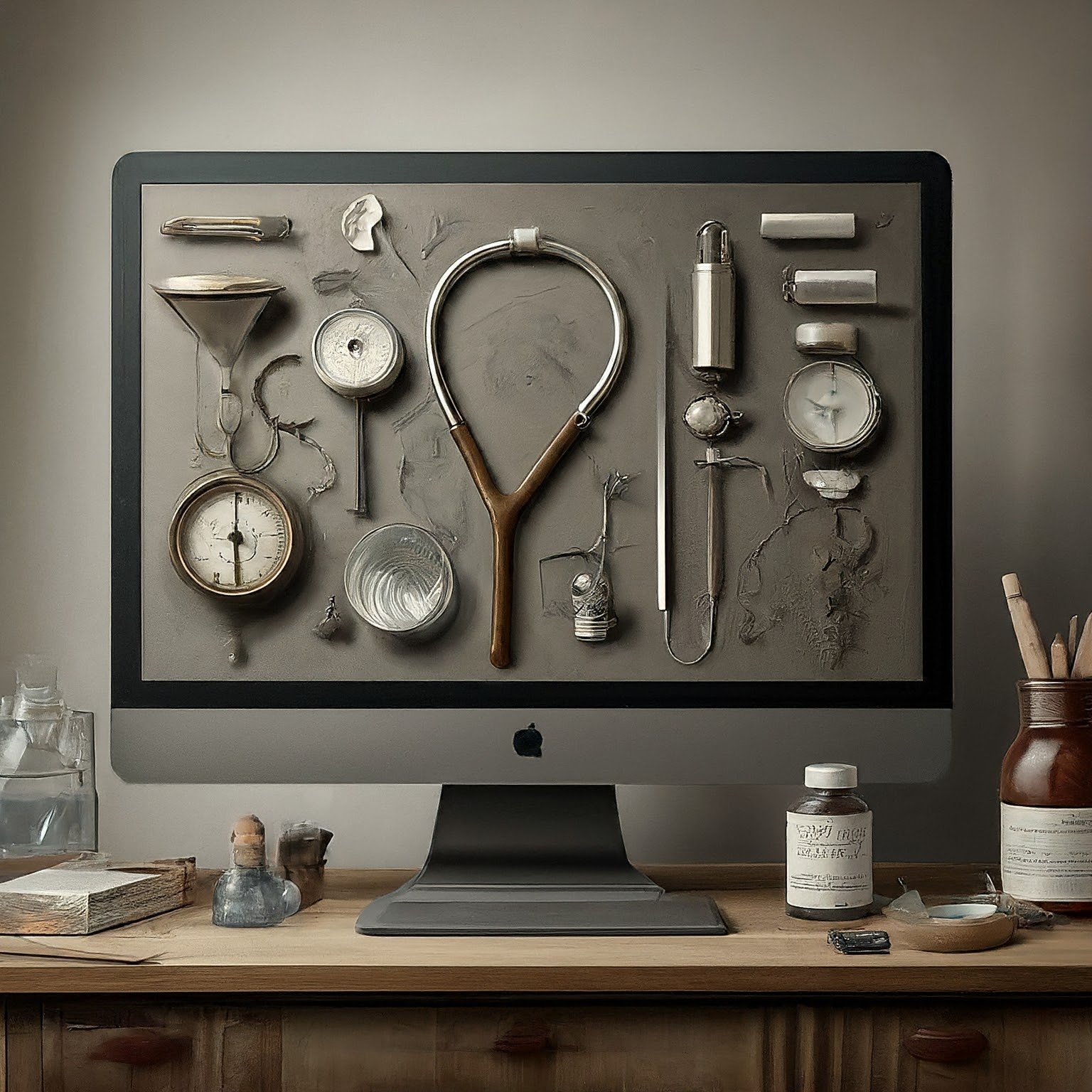Wacky Google Gemeni generated image of healthcare tools stuck to a computer screen.
The role of user experience (UX) design is crucial in healthcare. By focusing on patient experience, healthcare administrators, UX practitioners, and business leaders can drive significant improvements in healthcare delivery, leading to better patient outcomes and enhanced satisfaction.
Current Role of UX in Healthcare
UX design is pivotal in making healthcare systems more intuitive and patient-friendly. However, many patients today encounter bad UX and cumbersome and outdated technologies that negatively impact their healthcare experience. Poorly designed scheduling software, minimal functionality in patient portals, and the reliance on hard copies for sharing medical information are just a few examples of these drawbacks.
Outdated technologies and cumbersome experiences in healthcare increase stress, delays, and dissatisfaction. They cause more work, missed appointments, misunderstanding of data, and fragmented care due to poor information sharing. This leads to unnecessary calls, emails, and visits, straining a stressed system.
Addressing these issues requires a concerted effort to modernize healthcare technologies with a focus on UX. By prioritizing user-friendly designs, healthcare organizations can ensure that patients have a smoother, more efficient, and more satisfying experience and reduce burden on their administrative staff.
Improving Patient Experience through UX
A well-designed UX can significantly enhance the patient experience by ensuring that digital health tools are accessible, easy to use, and tailored to individual needs. For example, telehealth platforms enable patients to consult with healthcare providers remotely, which has become especially important during the COVID-19 pandemic. These platforms must be user-friendly to ensure that patients of all ages and technical proficiencies can navigate them without difficulty.
Another example is wearable health devices, which have revolutionized patient engagement by allowing users to monitor their health metrics continuously. These devices provide real-time data on heart rate, physical activity, and sleep patterns, enabling users to take proactive steps in managing their health. The user-friendly interfaces and seamless integration with smartphones make these devices accessible to a broad audience.
Healthcare providers and healthcare systems need to seamlessly integrate with both telehealth and wearable technology if they are to effectively meet patients’ needs.
AI is another area that offers healthcare an opportunity to seize the power of technology to meet patient needs, if we can create experiences patients will understand and use.
Challenges in Implementing UX in Healthcare
One of the significant challenges in healthcare UX is the misalignment of incentives between different stakeholders, such as healthcare providers, patients, and insurance companies. For example, healthcare leaders might prioritize cost-efficiency and data security, while patients might focus on ease of use and accessibility. Bridging these gaps requires ongoing communication as to the value of UX and the involvement of all stakeholders in the design process.
Moreover, regulatory constraints and the complexity of healthcare systems can pose additional challenges. Ensuring compliance with regulations such as HIPAA (Health Insurance Portability and Accountability Act) while designing user-friendly interfaces can be difficult. HIPAA mandates stringent data privacy and security measures, which must be meticulously incorporated into the user experience without compromising usability. Despite these challenges, the potential benefits of improved UX in healthcare make it a worthwhile investment, one that can meet both regulatory obligations and patient needs.
User diversity is another factor that can hinder the user experience if we don’t actively engage our patients in creating the experience. Healthcare users come from diverse backgrounds with varying levels of technical literacy. Designers need to accommodate users with different needs and abilities, including older adults, individuals with disabilities, and non-native English speakers.
Involving Users in the UX Design Process
Involving users in the UX design process is crucial for creating effective healthcare solutions. User-centered design (UCD) principles emphasize the importance of understanding the needs, behaviors, and preferences of end-users through continuous research and feedback loops.
Conducting user research through methods such as interviews, surveys, and usability tests helps designers gain valuable insights into patient behaviors and pain points. For example, designing a telehealth platform that accommodates elderly patients' needs requires understanding their challenges with technology and addressing these through intuitive design features. When done correctly, these research activities are led by people who are skilled at UX and capable of handling sensitive topics with your patient population.
Creating feedback loops with patients and their families ensures that healthcare solutions are continually improved based on real-world use. Regularly collecting and analyzing feedback helps identify issues early and make iterative improvements. Many companies with digital products establish a Voice of Customer program that provides the product teams with constant user feedback. Healthcare organizations should explore these same types of programs with a focus on how their digital experience is meeting patient needs.
Collaboration Strategies for UX Practitioners and Business Leaders
To drive meaningful change, UX practitioners and business leaders must collaborate closely. User research forms the bedrock of this collaborative effort. UX practitioners, with their expertise in understanding human behavior and user experience, can design and execute research studies that capture the voices and experiences of patients and healthcare providers alike. This research can uncover pain points, identify unmet needs, and reveal opportunities for improvement.
The synergy between UX practitioners and business leaders, coupled with a patient-centric approach and the power of AI and machine learning, holds immense promise for transforming healthcare. By working together, these stakeholders can design healthcare solutions that are not only effective and efficient but also compassionate and human-centered. This collaborative approach has the potential to revolutionize the way healthcare is delivered, leading to better outcomes for patients and a more sustainable healthcare system.
While every situation will have unique aspects, there are some high level recommendations for developing this collaboration, including establishing clear roles and responsibilities for all stakeholders involved in the collaborative approach, and Provide training and education to healthcare professionals on collaborative practices.
Conclusion
The importance of UX in healthcare cannot be overstated. By focusing on creating intuitive, accessible, and user-friendly digital health tools, UX practitioners can play a vital role in transforming the patient experience. Healthcare leaders must recognize the value of UX and invest the resources to involve users in the process of designing healthcare experiences and support its implementation. Together, they can create a healthcare system that is not only more efficient but also more compassionate and responsive to the needs of its users. UX plays a crucial role in improving patient outcomes and satisfaction. Current UX in healthcare is often inadequate, leading to poor experiences. A well-designed UX can significantly enhance the patient experience. User-centered design principles, collaboration, and AI hold promise for transforming healthcare.



![Photo by bobech (bobech) [CC BY-SA 3.0 (http://creativecommons.org/licenses/by-sa/3.0) or GFDL (http://www.gnu.org/copyleft/fdl.html)], via Wikimedia Commons](https://images.squarespace-cdn.com/content/v1/54cd5790e4b0ebaa826b0129/1489372826110-PFJEUO6XV36XR4L0M4XQ/image-asset.jpeg)





